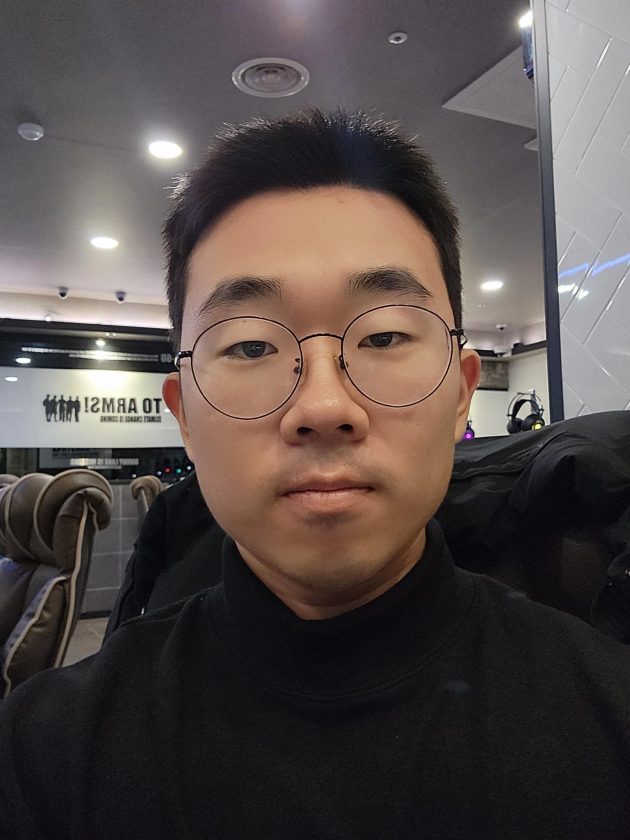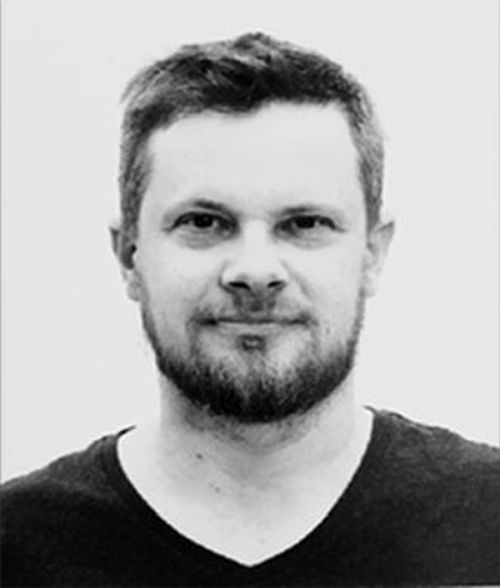
Meet John A. Frye, a heavy-duty industrial designer for alternate realities from California, United States. We are fortunate enough that even in spite of his hectic schedule, John was able to squeeze in some time for this interview.
One of the best parts that I personally like about him is his straightforward approach of “identifying the problem” first and then solve a problem. His designs are an epitome of the same. Designing, after all, is solving a problem.
Read on to learn more about his technique, workflow and vision,
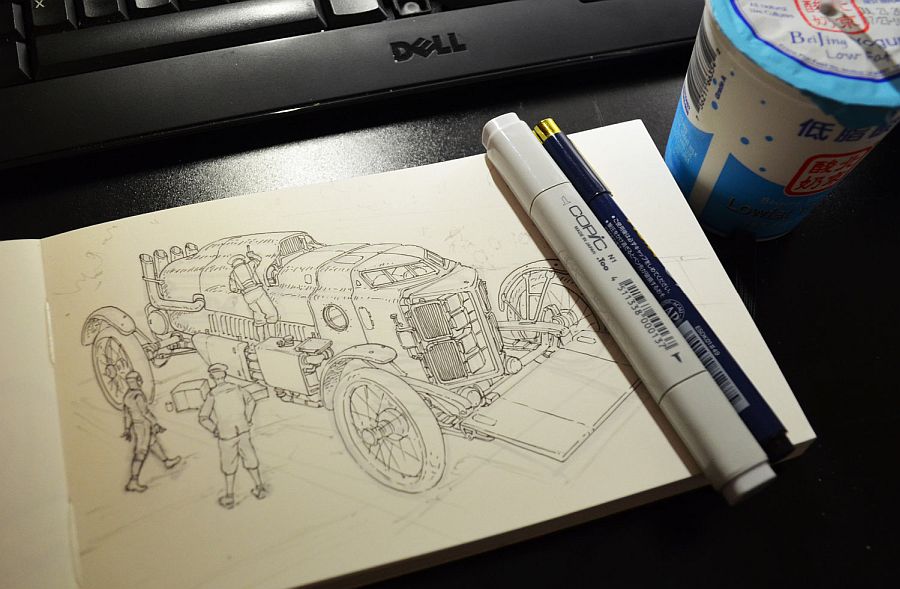
How do you come up with such perfect free hand drawing/shading and detail in all your sketch work?
I’ve been working on my technique diligently throughout my life and continue to try to improve. I’m proud that I didn’t let my skills stagnate after graduation from design school (Art Center College of Design), but initially for the first few years I wasn’t doing my own personal design and art. Pushing myself to stay creative and productive outside of the work day has kept my artistic fitness.
I continue to research new techniques and pay close attention to the work of artists, designers and illustrators that I admire. My style is very logical and straightforward. I don’t do much exaggeration or abstraction as is common in car design sketches. That doesn’t come naturally to me, but at the same time, my goal is to be very clear with presentation of the design- so that someone can see it distinctly, and understand the form and shape. That’s why I’ve focused on the techniques of illustrators from the 1950s and 1960s who did automotive advertising and model kit box art drawings.
At the same time, if you do that style, you have to be careful to make sure there is some humanity and life visible in the technique. That’s why I try to show the “brush” or simulate some analog tools, making things look tight, but up close retaining some looseness and striving to distance the image from something that appears digital. I never use paths and don’t use photo bash as a technique as my own standard.
I usually start with small ballpoint pen roughs that I bring into Photoshop as an underlay and often retain some of that scratchy, loose original drawing in the final image.
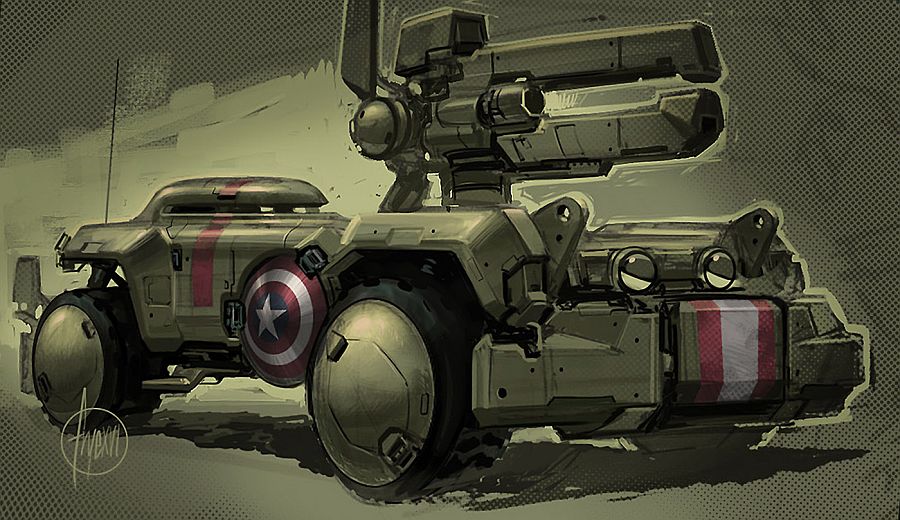
While sketching a new vehicular design, do you have to think years ahead to what rival designs might look like?
For new vehicle design, you are keying in on the specific year of production that you are aiming for. Generally, car companies aren’t trying to “out-future” each other and actually, from a styling standpoint, most designers are focused on their own brand and their own customers. It’s like a horse race and the end goal is most important. The horses have blinders so that they don’t get distracted by the ones next to them and they can look ahead.
In a competitive market, of course you have to consider the competition with pricing, size, feature content. There’s generally a large team to research and speculate the climate and state of the market for each type of vehicle which provides the framework for styling creativity. Everything is about considering the customer first- that carries the direction of the entire design.
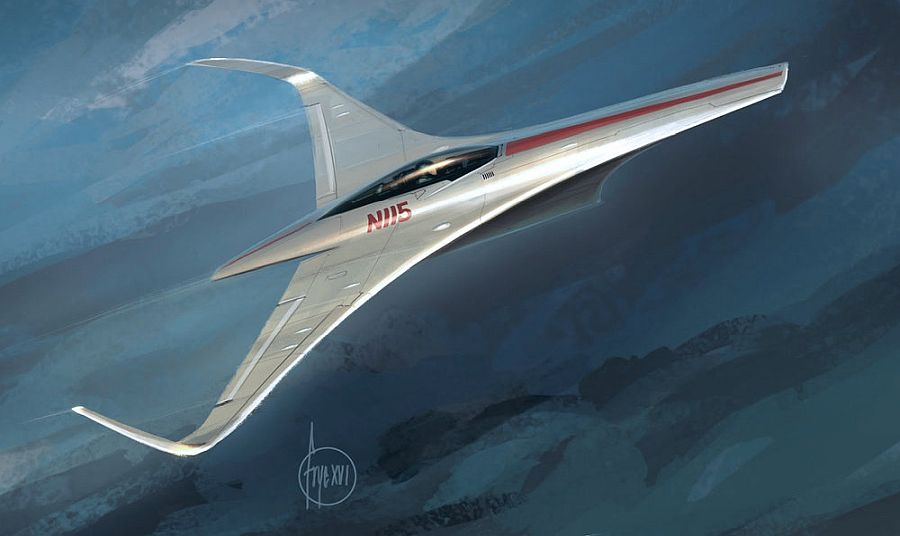
If you are asked to revamp the existing car models let’s say Aston Martin Rapide E, Cadillac CT5, Chevrolet Corvette Stingray or Ford Mustang Shelby GT500, what would your approach be. Is it architecture or nature?
Those are all very different vehicles, but the approach for all of them is very straightforward and similar to any other design job. The first step is to dive straight into knowing everything about the brand, the current car, its history, and look at the data for the market. I always like to base my core direction on identifying the problem.
Every design is created to solve a problem. Every new model of an existing car is solving lots of problems, even if they are minor. If drivetrain and chassis stay the same because it is working, then a styling revamp is usually solving the problem of declining sales from overfamiliarity of image.
Essentially people want fresh, new looking things. If that’s the case, you are looking for a direction based on customer appeal. Many of these cars have a rich heritage so the nostalgia element comes into play and blends into a brand-new design at a ratio that needs to be decided by the team.
Too much nostalgia gets into “retro” design which is off-putting to some, but if you go completely new with no historical references, you may end up alienating a lot of your traditionalists in products like the Corvette or Mustang.
Usually, a successful design should look somewhat iterative when parked next to previous models. There should be a balance of visceral connection and engaging newness that makes you excited.
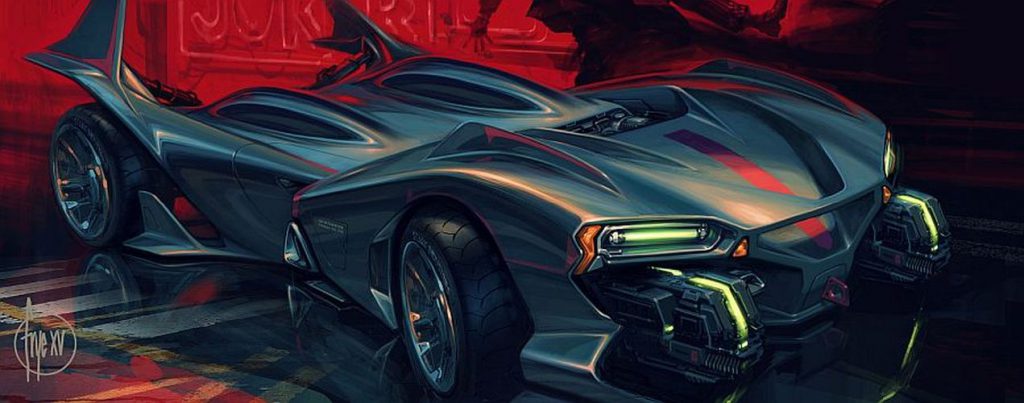
What according to you are the most pressing problems (on technical front) are faced by Level 4/5 autonomous vehicle developers?
I can’t speak too deeply on the technical side of things, but I am aware of the big challenges with autonomous systems seeing and understanding things clearly in all conditions. Rain, snow, fog, all the things that make it tough for humans to see are often interfere more with autonomous sensor systems.
Logic is an even greater challenge because of the unpredictable nature of people. Being able to anticipate another car, bike, or pedestrian’s next move is a very complex process. An experienced driver can see that someone on a bicycle ahead of them is likely going to swerve to the left to avoid a pothole and make sure the cyclist has space. Seeing someone on a curb who has the right of way to cross but is just standing there on a cell phone, not intending to cross is something that we can understand, but to an autonomous system, it may not get that subtlety.
Autonomous works best when everything is autonomous and on the same logic system. But that’s not going to happen soon, and when you throw in pedestrians, bikes, scooters, dogs, and other elements of mobile humanity, it makes things hugely complicated. High level autonomy on freeways is much quicker to realize because you don’t share the road with most of those other random moving objects most of the time.
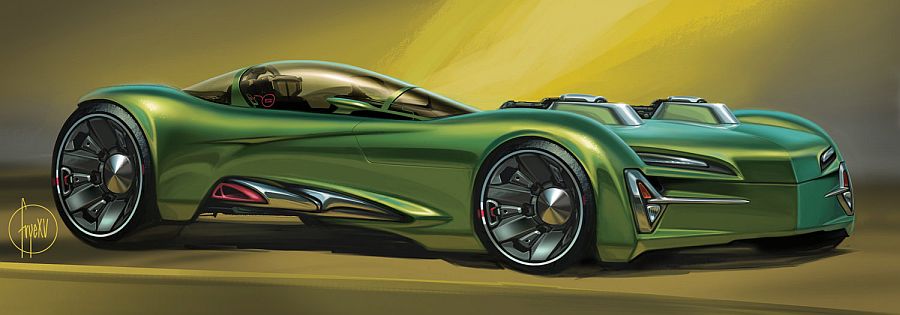
Would you say you have a certain approach or philosophy to your designs?
I don’t know if I have any special or distinctive approach to design. Making things look cool, satisfy the customer and enjoy the process are all pretty common. Designer individualism usually comes from where our influences come from.
What kinds of furniture design, graphic design, favorite cars, art, illustrators, concept designs I like blends into a complicated recipe. I also like to have a soundtrack going when I sketch that gets my brain into a fired-up creative mode. I spend a lot of my life hunting down music that I like and using it to support my creative process.
Most of my personal work is based on a lot of older tastes, and I am a bit stuck specifically on the influence of about 1968/1969 for form language, graphic design, fashion. That plays a lot into my work. I do designs from a volume first approach. The silhouette has to be interesting first, before the surface is considered and detail. Because of that approach, I start out very roughly with abstracted thumbnail sketches that are silhouette centric, and suggest allocation of detail as a secondary element. If there’s any overarching philosophy in a more traditional sense, it’s that I want to create designs that improve the world.
If I’m sketching something up for myself, I avoid dwelling on weapons in particular. I don’t understand the drive to sketch guns. Concept designers sketch guns for their own personal fun work. So much of our media and storytelling in video games and movies is narrowminded in that problems are solved with a violent conclusion in the final act. It’s a cop out in storytelling as it resolves a conflict in a primal but inhumane way. It’s often good and valid entertainment, but there’s just so much of it out there, I want to do something different, so I try to focus my efforts on conceptual fantasy revolving around world building.
Racing, construction, civil work and rescue are re-occuring themes. I’m torn in that I love the military hardware design aesthetic, so I’ve done plenty of military vehicle sketches but approaching in a way that avoids the aggressor mentality and instead using a military appearance on a race car or transport vehicle. Stripping the weapons off and leaving all the other aesthetically interesting elements- hardware, functional elements, faceted surfacing, matte color palettes.
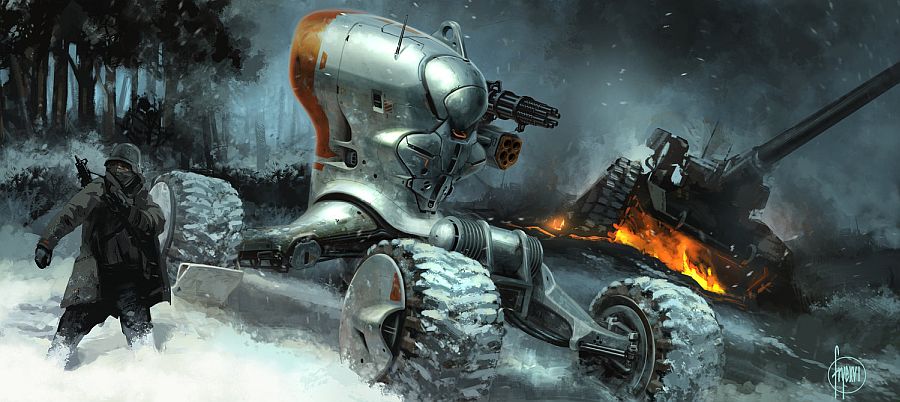
How far am I correct in holding a view, “car design is never regional”?
Car design is very regional. Manufacturers would love to make a global car, and that goal is not completely invalid, but the customers and their lives are so varied across the planet that we end up with completely different car markets depending on the country. There are areas of overlap in similarity of lifestyle that are points where a world car can have some success.
Small hatchbacks are the closest architecture for a world car. In most parts of Europe, this is the best size, shape, and package. In the United States, we have more space, cheaper fuel, so small hatchbacks are a small market. Globally, I think we should strive for smaller, more efficient vehicles, but in the United States we are unfortunately able to easily live in great excess and waste so for the time being the best-selling cars will be large ones with not-so great mileage that are driven around mostly empty most of the time.
I think the United States is getting closer and overlapping more with Europe with what a common consumer car should look like. Consider what the Beetle looked like in the late 1950s next to American cars of the day. That difference between a European common car and American common car is smaller now but still distinct.
Comparing to other countries like China or Japan or India, they are all distinct. I believe the market in China will develop as odd combination of American size and European fuel efficiency.
One small item to mention is the complication of regulations that differ between countries. Even with cars that are sold globally, there are all sorts of headaches caused by differing lighting standards, crash standards etc. so that manufacturers spend a lot of money-making subtle changes for other markets.
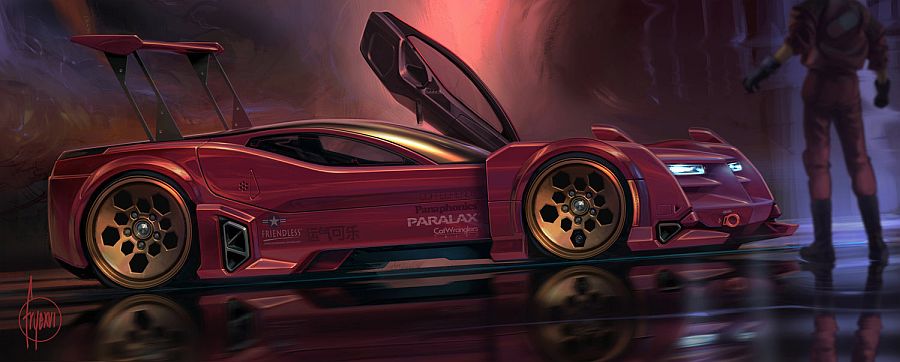
Someone comes up to you and says, “I want to be just like you. I want to design vehicles.” What advice would you give?
My advice has really changed and it’s definitely harder to give advice to students than ever before because of massive changes in the car design industry. I would say that being a car designer is something that very people get to do but many people want to do it, so understand going in that it’s very competitive.
At the very beginning, you have to have a few character elements as a foundation- one is you have to be the sort that is unhappy with things that are not well designed. Being frustrated is what makes you a good problem solver and being aware of things that need to be improved.
Secondly, one needs to be pretty nuts about cars. I think this element of advice is changing a bit as we start to get into autonomous and alternative forms of transportation like the prevalence of ride sharing. A lot of the designs we create will be more products than traditional cars, stylistically, so I think this opens doors to designers who are not car nuts to get into this industry.
Thirdly, you need to have a love with creating. Drawing, modeling in 3D, even if you aren’t good at it yet, you enjoy the process and can spend hours doing it. This is a brain wiring thing. If you can get into that creative mode, then you can work on improving the skills and techniques. But if the act of focusing on drawing or sculpting is difficult or tiring, you’re going to have problems.

Having those three attributes, you can consider an education. Get into the best design school you can. Money will be an issue for most. Be patient. I did two years of community college first and worked on my design portfolio all by myself before applying for Art Center, and that two years was important in that my entry portfolio was at a higher level and gave me a good scholarship, I was also a step up on classmates, skill wise, at the beginning.
Last, I think people need to understand that the glamorous part of design is making cool sketches, but professionally a car designer is only sketching for a small amount of time during the development process. There’s lots of problem solving around technical and feasibility areas, lots and lots of meetings and customer research, months of moving surfaces on a design in tiny increments. Tuning, refinement, fixing. It takes a lot of patience, but I think the most successful designers find joy in all the aspects of the process, not just the sketching. They are engaged with customer research, they think about the changing market and industry and think about solving problems all the time, not just on the clock.
My career in design started with an opening at the company I loved as a digital modeler, a niche that I was not expert in but I saw as a great opportunity to round myself out as a complete designer.

So, I would advise anyone if they love the industry, to explore other avenues in the creative process, not just an exterior sketching role. There are massive growing opportunities in interior design, UI/UX design, and as always, the customer and market research roles.
Again, to circle back on the competitiveness of the job market- you need to be self-critical and very aware of your level of communication and drawing and designing skills as you proceed through school. Be realistic and identify strengths and weaknesses. Target improvement in weak areas and track progress.
If it looks like you may have some limitations, reconsider your career path. If you don’t seem to be picking up sketching skills as well as your classmates, despite strong efforts, consider focusing on 3D modeling.
I have hard time encouraging students to pursue clay modelling only. With the progression in design workflow, any clay modeler should have good digital skills. That being said, 3D sculptors, either digital or clay, are very highly valued and in great demand.

John, it has been a real pleasure! I can’t thank you enough. You have remarkable insights and your work is truly an inspiration. We look forward to visit you again and see more of your creative effort in the future. Till then, we wish you all the very best for your future endeavour.



